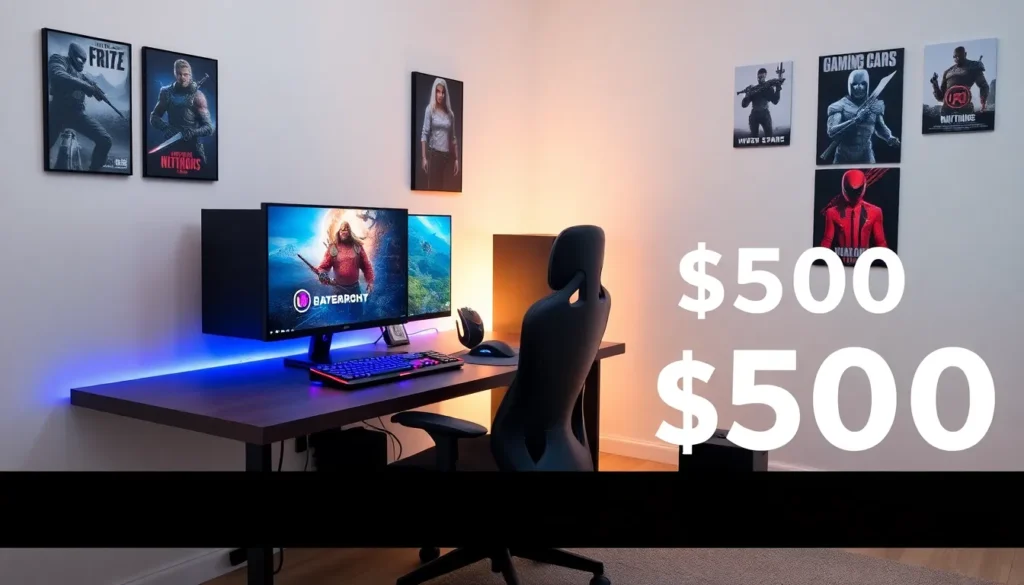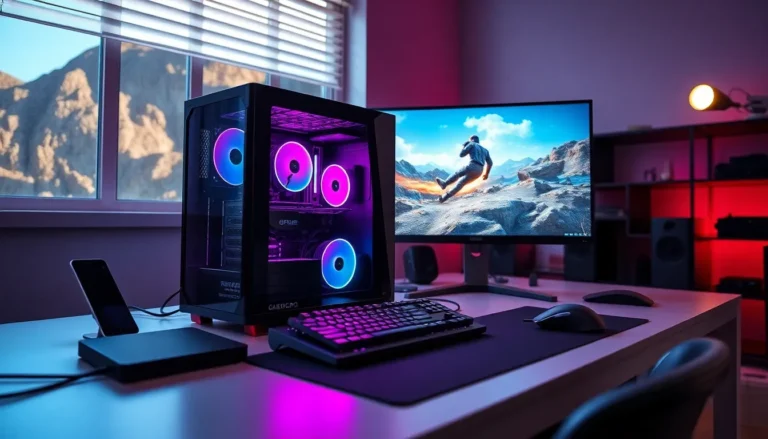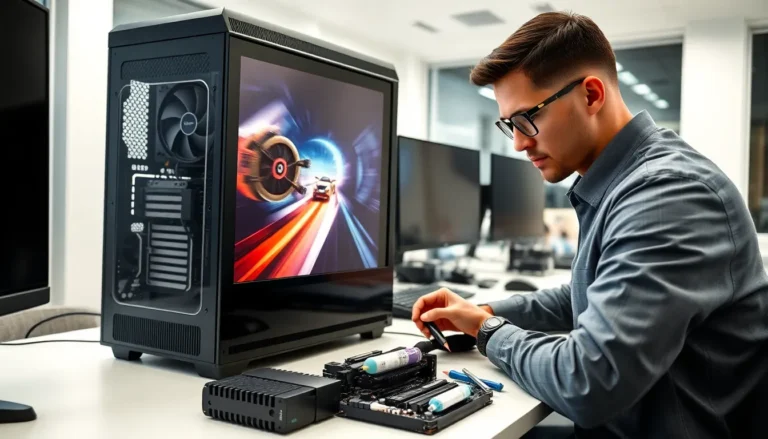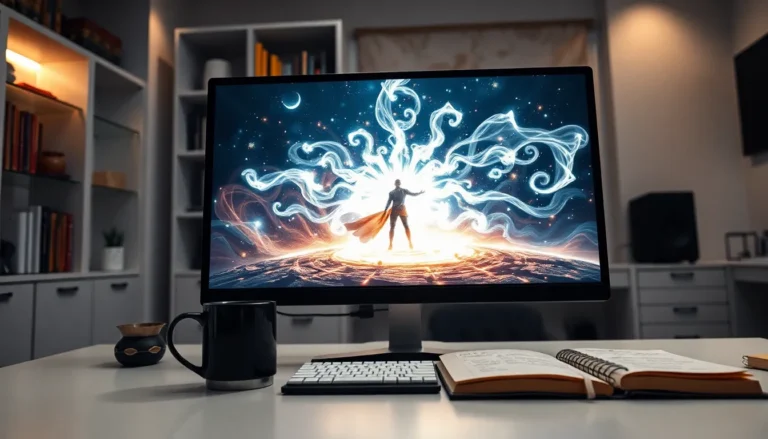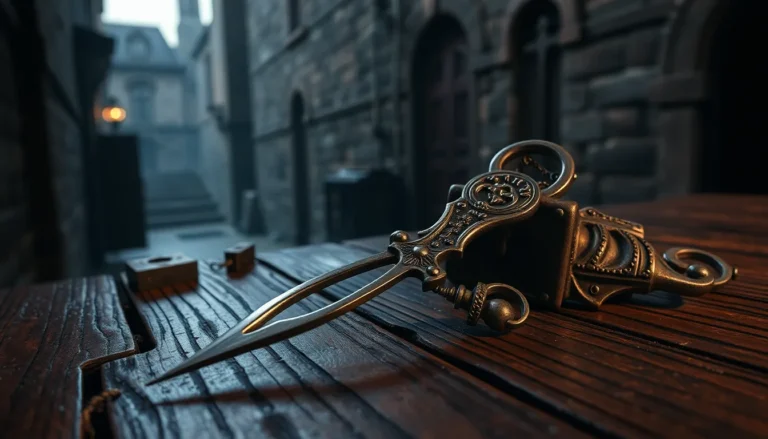Table of Contents
ToggleIn a world where gaming can often seem like an endless money pit, the idea of assembling a solid gaming PC for under $500 feels like a fairy tale. But fear not, you savvy gamer. With the right knowledge and a bit of hustle, a powerful gaming rig is within reach. Imagine slicing through 60 frames per second in your favorite titles without very costly. Grab your snacks, because this guide will lay out everything you need to build or buy your dream machine, all without sending your wallet into a panic.
Understanding the Budget Gaming Market
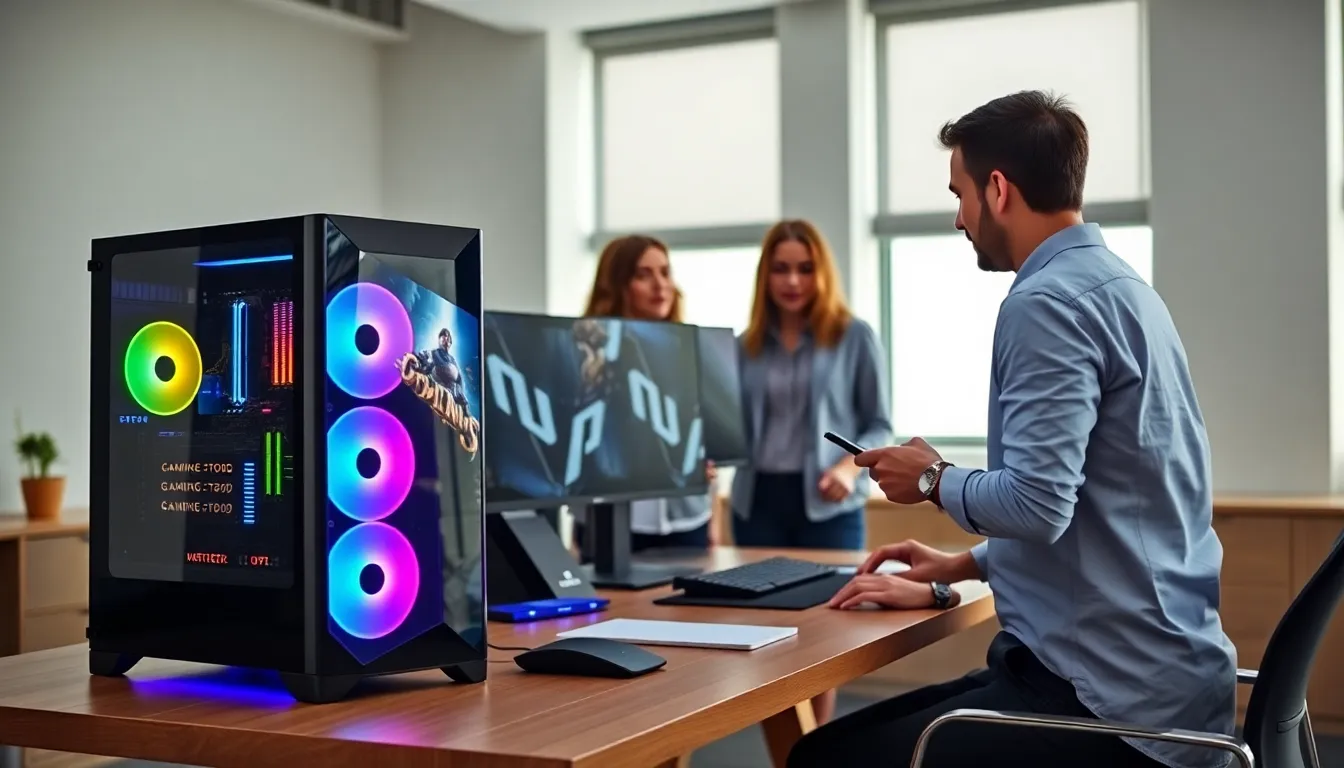
The budget gaming market has evolved dramatically over the years. Gamers can now find viable options without having to sacrifice performance. With an increasing number of manufacturers catering to entry-level markets, it’s easier than ever to piece together a reasonably priced rig. Of course, understanding where to spend your money is key. The wise buyer knows to prioritize certain components and make sacrifices in others, depending on personal gaming preferences.
Key Components of a $500 Gaming PC
Building a gaming PC on a tight budget isn’t impossible. Here are the essential components to consider for that coveted build:
Choosing the Right Components
Selecting components should always begin with research. Different gamers prioritize various aspects like graphics, speed, and storage. Understanding these needs can help make informed choices. Remember, the objective is to strike a balance between price and performance.
CPU and GPU Options
A strong CPU (Central Processing Unit) and GPU (Graphics Processing Unit) are the backbone of any gaming PC. When working within a $500 budget, brands like AMD and Intel often provide excellent options. Look for AMD’s Ryzen 3 or Intel’s i3 processors. For GPUs, entry-level models from Nvidia’s GTX series or AMD’s Radeon RX lineup provide a sweet spot for performance versus cost.
Motherboard and RAM Considerations
Once you’ve chosen a CPU, you’ll need a compatible motherboard. There are budget-friendly options from brands like MSI or ASUS that fit well into a $500 budget. For RAM, 8GB is typically sufficient for most games. Consider getting a dual-channel setup if possible to improve performance.
Storage Solutions for Budget Builds
SSDs (Solid-State Drives) can significantly improve load times compared to traditional HDDs. But, budget constraints may mean opting for a smaller SSD combined with a larger HDD for additional storage. This hybrid approach allows for faster performance along with ample space for games and files.
Assembling Your Gaming PC
Assembling your own gaming PC can be a challenging job, but it’s also incredibly rewarding. Here’s what you need to know:
Building vs. Buying Pre-Built PCs
While pre-built PCs are convenient, they often come with a price mark-up. By building your own, you can save money and customize the build specifically for your gaming needs. But, some reputable manufacturers have started providing budget pre-built options that may be worth considering, depending on your comfort level.
Step-by-Step Assembly Guide
- Prepare Your Workspace: Clear a large surface and gather tools. An anti-static wrist strap can also help protect components.
- Install the CPU: This usually involves placing it into the motherboard’s CPU socket carefully, matching the notches is key.
- Apply Thermal Paste: A small amount can go a long way. Spread it evenly before securing the CPU cooler.
- Mount the Motherboard: Place it inside the case, ensuring the standoffs are correctly aligned.
- Install RAM: Click the sticks into the motherboard slots firmly.
- Attach Your Storage: Secure your SSD and HDD in their respective bays and connect cables.
- Insert the GPU: This needed a sturdy motherboard slot.
- Power Connections: Finally, connect the power supply to the motherboard and components.
Testing and Optimizing Your Build
Once your build is complete, it’s time to test everything. Benchmarking your system will give you a good idea of its capabilities.
Benchmarking Your $500 Gaming PC
Use benchmarking tools like 3DMark or Cinebench to push your new rig. These tools help determine how well your system performs under pressure. Don’t forget to check temperature levels to avoid overheating. If things seem off, tweaking the settings or improving airflow might help.
Tips for Future Upgrades
Just because you’re starting with a budget, doesn’t mean you can’t grow. Here are some upgrade tips to keep in mind:
- Plan Ahead: Leave room for upgrades when choosing components. Picking a motherboard with additional RAM slots can save time later.
- Monitor Market Trends: Prices fluctuate, especially during sales events. Be on the lookout for better GPUs or CPUs that might drop in price.
- Stay Informed on Compatibility: When looking to upgrade, always check if new components will work with your existing setup.

